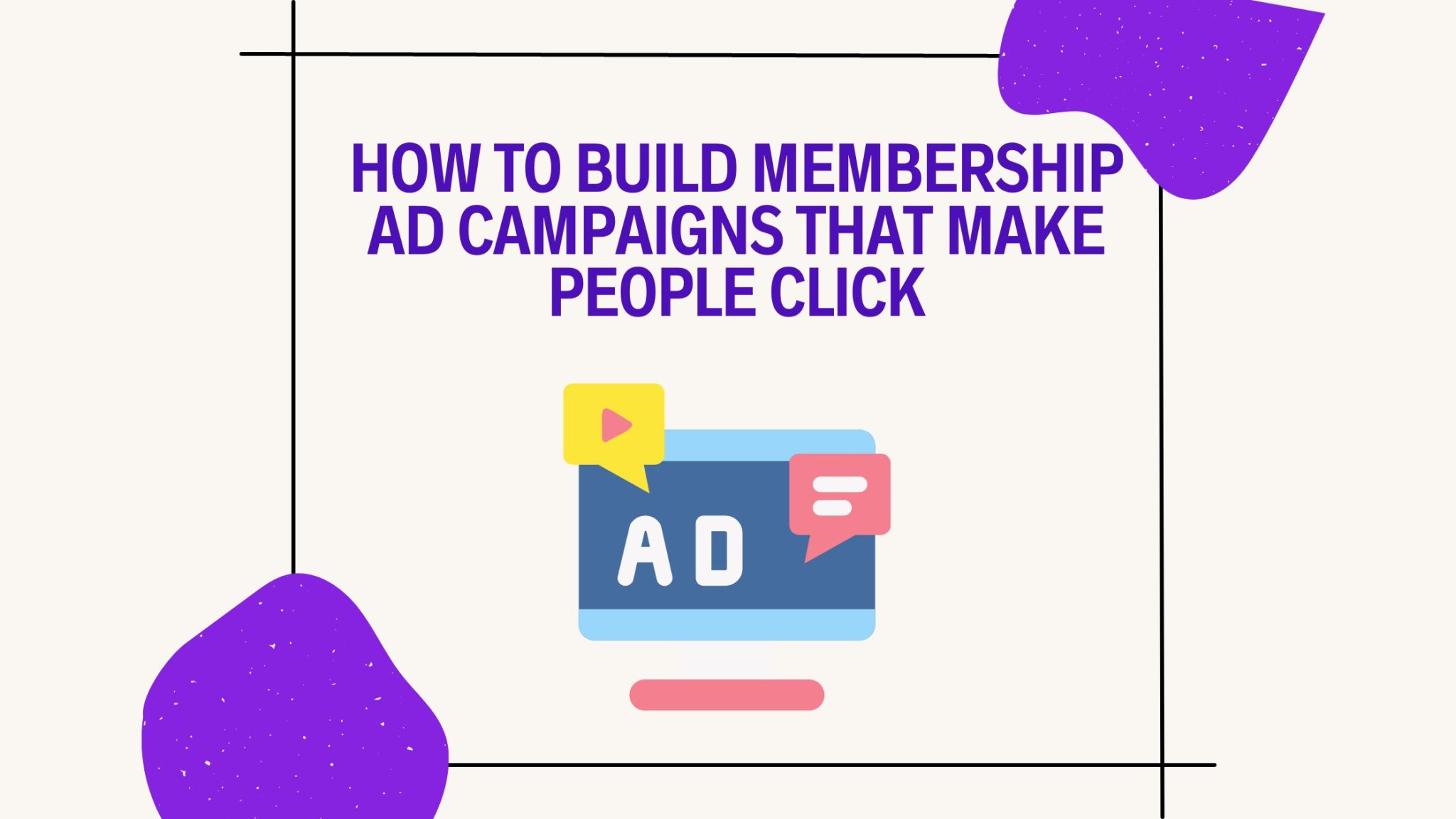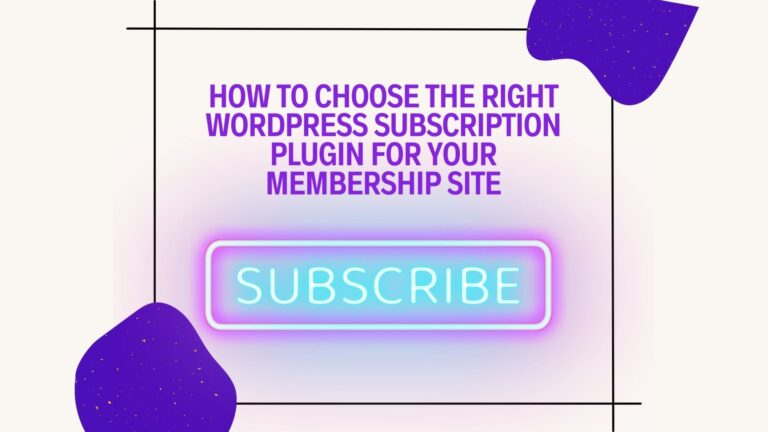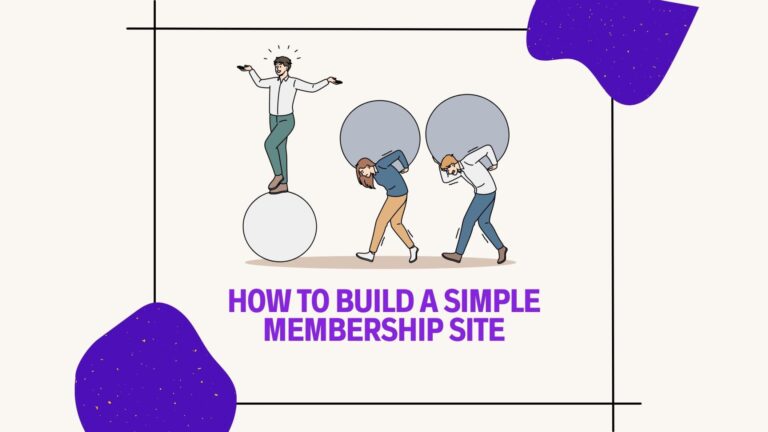In an ideal world, you’d grow your membership site organically. Unfortunately, that isn’t always possible, as organic algorithms can change a lot, and breaking through the noise can sometimes feel like a riddle. In these situations, creating membership ad campaigns can be a great way to boost your membership site’s numbers.
How do you do that efficiently?
Let’s take a closer look.
Understand how pay-per-click works
Pay-per-click (PPC) advertising is an industry in its own right, so approaching it without any prior knowledge can feel overwhelming. To get started, learn what PPC is and how it works:
- PPC campaigns involve paying for clicks on your ads. Sometimes, advertisers pay for impressions, leads, or downloads, but the primary method is still pay-per-click.
- Different platforms offer different features and tools, so you need to decide on the PPC channel that suits your needs best (more on this later)
- Every platform has its own policy and rules. You may feel tempted to skip these and jump right into membership ad publishing. Don’t skip the rules, though — the last thing you want is to have your account blocked due to a technicality.
- Understand different bidding models. For example, Google Ads will allow you to choose from a variety of bidding options, such as cost-per-click (CPC), cost-per-impression (CPM), or cost-per-action (CPA). These options will “guide” your automated bids according to your goals and how you want to pay for your ads.
Understand your audience
Before creating your membership ad campaign, it’s important to understand your target audience. Who are they? What do they need from you? How do you get to their minds and hearts in a way that makes them want to pay for your content or services?
Dig deep into your audience. See how they speak, where they hang out, what kind of jokes make them smile — and what irks them too. Make your audience your best friends: spend time empathizing with them, so you can build membership ad campaigns that actually speak to them.

Choose your pay-per-click channel
There are many PPC channels you can choose for your membership ad campaigns. Some of the most popular ones include:
- Google Ads (in Search or through the Google Display Network)
- Facebook/ Instagram Ads (Meta Ads)
- Twitter Ads
- LinkedIn Ads
- Quora Ads
- Pinterest Ads
There’s no “right” or “wrong” channel. The idea is to invest in a PPC channel that:
- Is likely to attract your target audience
- Suits your budget and needs
- Makes things as easy as possible for you, as far as PPC management goes
Choose your type of ad and your goal
Once you’ve chosen your PPC channel, it’s time to start creating your ad. Depending on the platform, this will involve writing copy and creating graphics.
At the same time, you’ll need to decide on the type of ad and your goal. With Google Ads, for example, you can create:
- Search Ads
- Display Ads
- Video Ads
- Shopping Ads
- …And more.
Your goal could be to drive awareness to your membership site, drive more membership signups, or build an email list to nurture using a lead magnet.
Set realistic expectations
Many people think PPC is “a fast way to build an audience”, but the reality is different. Just like any other type of marketing, paid channels aren’t a magic wand. You can’t put money into a PPC channel and expect it to turn up the leads or traffic you want — this is not a vending machine; it’s a complex marketing channel.
Expect to “fail” a couple of times until you figure out what works best for you and until you collect enough data to inform better decisions. That’s why it’s best to start small, experiment a lot, and scale up after you understand how things work.
So, set realistic expectations and give yourself time to experiment. See what campaign type works best for you, which ad copy resonates with your audience, and which channels drive the best ROI.
Create to stand out
Yes, your ads need to be clear and direct. They need to speak about what your target audience will get if they click your ad/ sign up for your membership site. And they need to adhere to platform policies (as mentioned before, they do cancel accounts indiscriminately.)
But also remember the average person is exposed to 4,000-10,000 ads daily. That might seem like an exaggeration, but if you count all the brand signs and ads you see from when you wake up to when you go to sleep, you’ll see the number isn’t made up.
As a membership ad publisher, you want to make sure you spend money on ads that get people’s attention, instead of ads that drown in an ocean of likeness. So create ads that stand out. To do so, you’ll need to understand your audience deeply and write copy that speaks to their needs in a way they can relate to.
Furthermore, you will have to use colors and design techniques meant to attract people’s attention — and drive them to take action (often with a sense of urgency.)

Consider a lead magnet
A lead magnet is an asset you usually offer for free, in exchange for people’s attention (and email addresses.) The whole purpose of running such a membership ad campaign is bifold:
- Driving awareness of your membership site
- Collecting email contacts, which you can then nurture
Use mixed media
Want to make sure your ads stand out? Mixed media is an excellent way to do just that. To put it simply, mixed media means you use a combination of images, copy, and video. For example, you could create an ad with a video background, dynamic text, and an interactive CTA button. These ads take a bit more time and effort to create, but they are all worth it.
Test…and then test some more
As mentioned before, it’s unlikely you’ll get it right the first time. The best way to see what works, however, is to test. Run multiple types of ads, measure everything, A/B test different approaches, and narrow down your strategy to a few tactics that work for your membership site.
Hire help
Feeling lost? Hiring a freelance PPC expert to help you out can be extremely helpful. They can offer valuable strategic insights and help you get the most out of your campaigns, especially when you’re just starting. It’s an investment, sure, but it could help you avoid losing money, time, and energy. Plus, it could help you reach your membership ad campaign goals faster, so it’s an option you should consider.

You May Also Like
Membership Forums: Should You Get One? And If Yes, How?
How to Send a Membership Email and Invite Someone into Your Community
How to Make the Most Of a Membership Plugin for Elementor
How to Build a Business with a Membership Plugin for Divi (and Which One to Choose)
Top 5 WordPress Restrict Content Plugins to Consider for Your Membership Site




